The perfect holiday in Colombia – our expert's ultimate itinerary
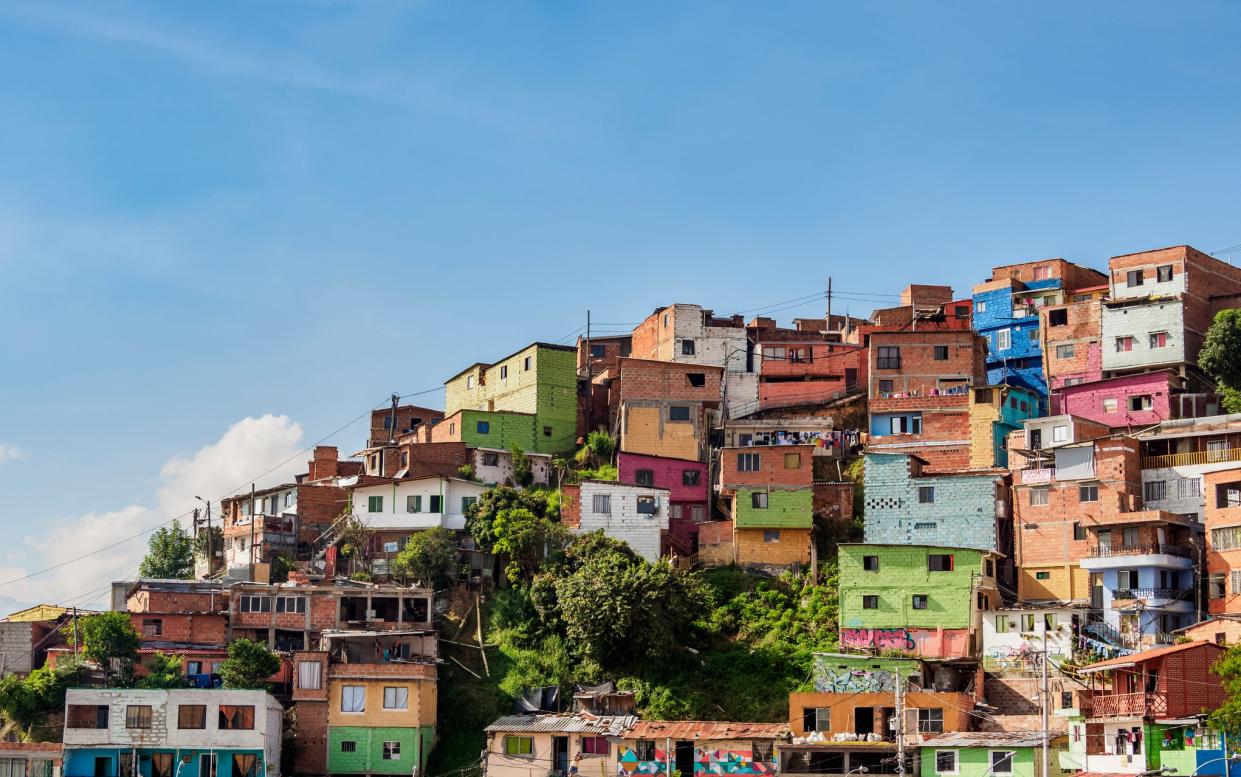
When people who’ve never been talk about Latin America, they are wont to mention mountain peaks, salsa music, great coffee, bananas, sunshine, beaches, monkeys, parrots and butterflies. Colombia, more than any other South American country, boasts all of these, and then some. What about former guerrillas now promoting tourism? A cathedral made of salt? Factories working to the hip-shaking sounds of Shakira? The Latin American nation has these, too.
Few countries have managed the kind of rebrand achieved by Colombia, in a time frame of about 15 years. Formerly feared as a crime-ridden pariah nation, a series of political amnesties, improved trade and an ever-improving tourism sector have transformed it. Since 2015, Avianca – Colombia’s flag-carrier and South America’s oldest airline – has flown direct from London Heathrow to Bogotá’s evocatively named El Dorado International.
The flight takes 10½-11 hours and operates by night in both directions. Colombia packs its pleasures and treasures into a relatively tight space. Four times the size of the UK, Colombia has long Pacific and Caribbean coastlines, a spread of urban centres and rural areas, amazing topography – at this latitude, the Andes divide up into three distinct ranges – and the ecosystems that implies.
Flights between the key centres rarely take more than an hour, and each time you hop off you’ll see and sense a different Colombia. For this first-time tour, I’ve left out the south. The Colombian Amazon is small and limited compared with Peru’s, and Cali, while great fun, is not the most enthralling of the country’s major cities. Instead, I’ve aimed at showing the best of the country’s central regions, from the cultural and commercial power houses of Bogotá and Medellín, to the lush landscapes of the Unesco-listed coffee region to the dreamy beaches of the Caribbean. In Cartagena, Colombia possesses a city with the romance of Havana and New Orleans, but arguably fewer clichés per square mile. It is a fitting last stop before you take off for an island coda.
Colombia surprises visitors. The people are stylish and sophisticated. They’re also rather bookish (Hay hosts a festival here every year). It has odd quirks – such as a cathedral carved from salt and crazily coloured chiva buses – but these just add more colour and character. If Europe sometimes feels done and dusted, this European influenced South American country is everything else.
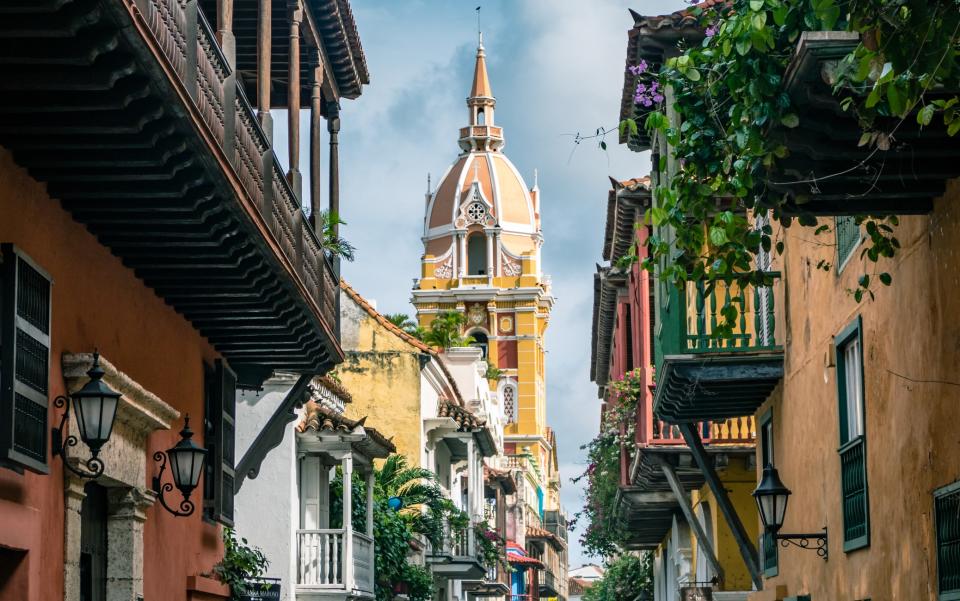
The itinerary
Bogotá by bike
Day 1
The direct Friday flight from Heathrow arrives Saturday at around 4am. Check in at the Hotel de la Opera, which occupies an elegant town house built in the local Republican style and is superbly located for a lot of the sights found in the historic La Candelaria area.
After a rest, head out to Bolívar Square, the main plaza and home to the national congress, city hall, palace of justice and cathedral; walk a few blocks south to see the Palacio Nariño, the presidential palace. Also nearby is the Gold Museum (banrepcultural.org/bogota/museo-del-oro) and a museum of works by Colombia’s best-known artist, Fernando Botero (born 1932).
Bogotá lies at 8,661ft above sea level, in the eastern range of the Andes, so walk slowly and drink plenty of water. For a light lunch, walk over to Calle 11 and Quinua y Amaranto (quinuayamaranto.com.co), which does good vegetarian food. On the same street, the Gabriel García Márquez Cultural Centre (fce.com.co) has a nice café and bookstore.
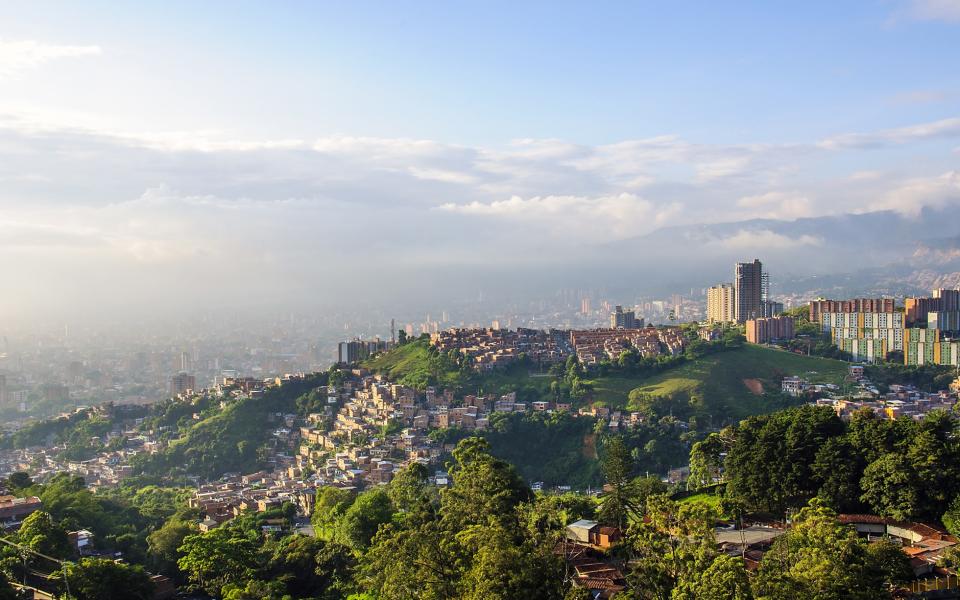
Day 2
Sunday is a special day in Bogotá, as 75 miles (121km) of streets are closed to traffic and thousands of bogotanos get on their bikes from 7am until 2pm; the ciclovía concept of car-free days originated here back in 1974. Hire a bicycle from bogotabiketours.com at Carrera 3, corner Calle 12B, and spend four to five hours gently pedalling as part of a small group towards the modern north side of the city, takingin trendy Parque 93, pedestrianised Zona T and the colourful flea and food markets at Usaquén. There are plenty of branches of Juan Valdez, the national coffee chain, en route.
In the evening, have dinner in one of the small restaurants around the pretty Chorro de Quevedo Plaza close to the hotel or go to the venerable La Puerta Falsa (established 1816) near the main plaza for tamales (corn, peas, egg and meat mush wrapped in a banana leaf).
The coffee triangle
Day 3
Fly to Pereira (one hour) in the middle of the so-called eje cafetero – coffee triangle or axis – which it forms with the cities of Armenia and Manizales. Of all Colombia’s regions this one is perhaps the easiest on the eye, thanks to the backdrop of hazy mountains, gentle slopes clad in coffee bushes, paso fino horses, and small Willys Jeeps whizzing around carrying beans, bananas and workers. Spend your first day visiting the Flora and Fauna Sanctuary of Otún Quimbaya with a birding guide (book through Manakin, a specialist firm runby naturalist Luis Urueña; manakinnaturetours.com).
En route, pop into Salento, enjoying a coffee break at the pretty Jesús Martín café – expert baristas can create any type of coffee you fancy using beans from the irown finca. In the evening, book into Sazagua, a 15-room rural hotel set in beautiful tropical gardens, with a pool and excellent restaurant.
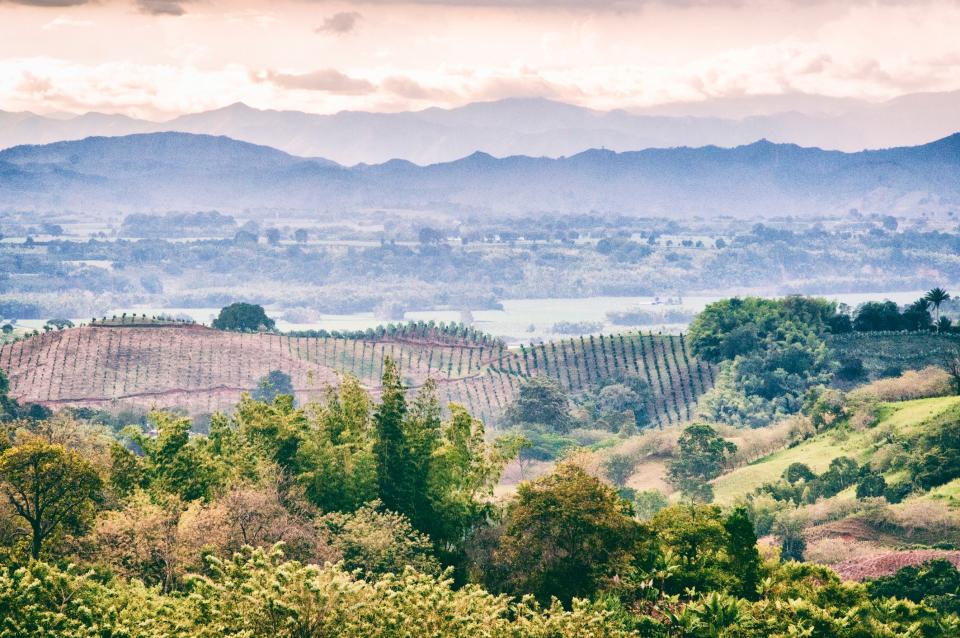
Day 4
Drive slowly north east towards Manizales, arriving for lunch at Hacienda Venecia (haciendavenecia.com), which will beyour lodging for tonight. Surrounded by coffee plantations, this gorgeous country house was made using the bahareque technique, with walls of clay and bamboo andred-tiled roofs.
The main house has just six cosy bedrooms and a lovely dining room where you’ll be served a traditional lunch of ajiaco (chicken and potatosoup). After dinner, stroll around the grounds before walking over to the coffee lounge for a guided walk.
Colombia’s coffee landscape is listed by Unesco, and there’s nothing like sipping a fine single estate surrounded by the glossy dark-green plants sagging with ripe beans. Manizales is just 11 miles away if you fancy a dinner out or a few glasses of aguardiente while shaking your salsa soul.
Day 5
Today involves a longish drive (four to five hours on slow roads), as you take in the agricultural heartland of Antioquia. Combined with the coffee region, this area is known as the home of the Paisas – a nickname for country dwellers, perceived across Colombia as hardworking, honest folk.
Make sure you try the bandeja paisa, a celebrated protein and carb power dish of beans, pork, fried egg, plantain, sausage, black pudding and rice. Check in to the Hotel Jardín (hoteljardin.com.co) on the main plaza of Jardín, one of the quaintest towns in this country. As the name gives away, this is the “garden” of Antioquia, and above the town are emerald-green mountains. A birding guide will take you up to orchid-filled upland forests nearby in a Willys Jeep to see euphonias, hummingbirds, cotingas and – with luck – the endangered yellow-eared parrot.
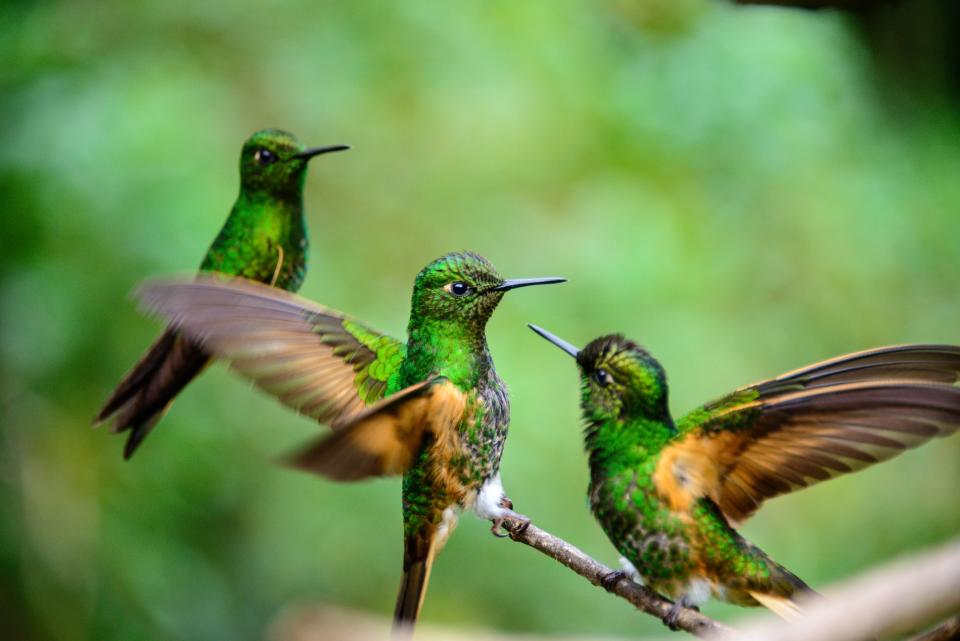
Medellín: the miracle city
Day 6
Drive to Medellín, a city that was once known as the world’s “murder capital” and the power base of notorious cartel boss Pablo Escobar, but is now one of the most forward-looking, creative cities in Latin America.
Check in to the Charlee Hotel for two nights. This imposing tower, in the hip Parque Lleras neighbourhood, has designer bedrooms and huge balconies. Ask for an upper floor to enjoy big views over the city; there is a lounge/bar on the 17th and 18th floors, and an aquarium-style pool.
Spend the day exploring the open-air Botero sculptures on downtown Botero Plaza, Parque Berrío and Plaza de San Antonio. On the latter you’ll see two bronze birds: one was blown up in 1995, allegedly by a Farc bomb, and has been left here as a “homage to the barbarians”.
Less ominous are the sensitively conceived civic spaces around the science museum, including a Barefoot Park where locals go to hug trees and soothe their office-worn feet in fresh fountains. The modern art museum is also well worth a visit. In the evening, stroll around Parque Lleras, which has dozens of independent boutiques, cool cafés and restaurants. If you want Colombian food, including traditional tripe soup, head for Mondongos (mondongos.com.co).
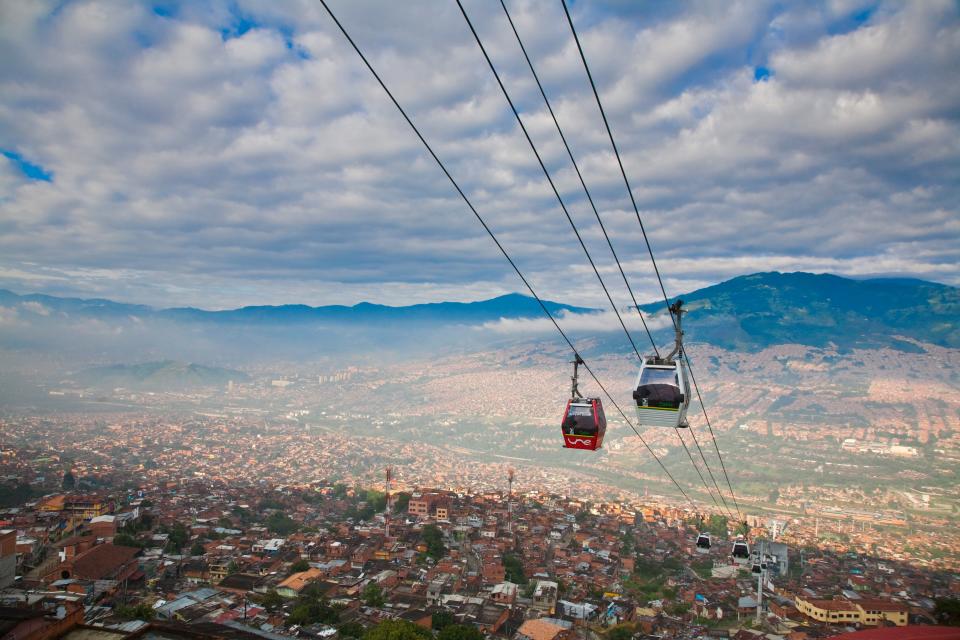
Day 7
Explore the wider city using the Metro cable gondola lift system, built in stages since 2004. Three lines – known rather prosaically as J, K and L – link the city centre to the poorer, outlying districts.
The system is credited with unifying the city and reducing pollution and commuting times. Visit the Biblioteca de España in the Santo Domingo Savio district: three huge geometric structures housing a reference library, set in apark. Enjoy dinner in Parque Lleras.
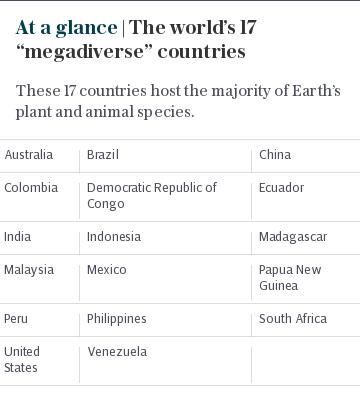
Cartagena: magic reality
Day 8
Fly to Cartagena de Indias (one hour) on the Caribbean coast. Check in to the Sofitel-run Santa Clara. Like much of the city, the hotel building dates from pre-Columbian times. Its single-lane streets are lined by pastel-splashed churches, monasteries and palaces, restaurants, craft shops and small hotels.
Spend the first day wandering around town, seeing the interiors of churches and the grim collection at the Inquisition Museum, and doing awalk round the outer bulwarks around dusk. You’ll see a lot of locals doing the same, stopping at the Café del Mar (cafedelmarcartagena.com.co) for a sunset cocktail. Dinner options are many, but you should definitely try the food at your hotel on one evening.
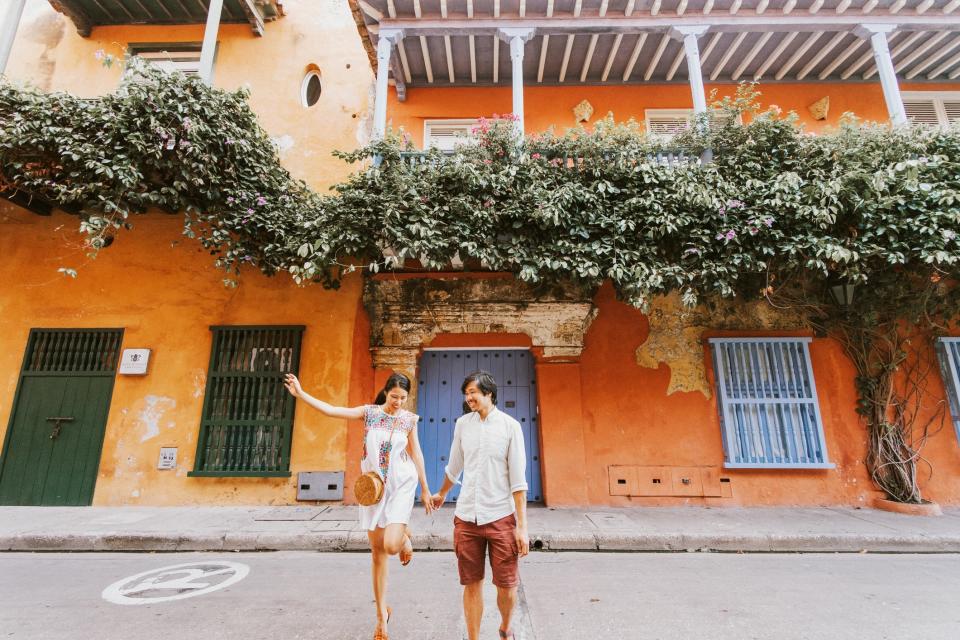
Day 9
Hire a bike after breakfast and ride over to Getsemani before it gets too steamy. This area is a smaller, less-polished version of Cartagena proper, and has a certain charm.
Try the street food or bike back into the walled city to have crab nachos and ceviche at Harry Sasson’s (harrysasson.com) in the Charleston Santa Teresa hotel. Alternatively, do a cooking class with cartagenaconnections.com for 200,000 pesos (£51) per person.
Dedicate the afternoon to seeing Cartagena’s art galleries – or a siesta! Pop back to Getsemani after dark todine on good pizza or tasty tapas at Demente, before enjoying the vibe at Café Havana (cafehavanacartagena.com), where a live band plays big salsa until the small hours.
Providence Island – the other Caribbean
Day 10
The trip to Providence – aka Isla de Providencia – begins with a 90-minute flight by jet to San Andrés, an attractive but overdeveloped island popular with Colombians. From here it’s another 15 minutes by prop to land on this tiny island off the coast of Nicaragua, officially recognised as Colombian in 2012. English-based Creole is spoken here more than Spanish.
You come here to do lots of lovely nothing, some swimming, snorkelling and reopening Love in the Time of Cholera on page seven. Check in to Deep Blue (hoteldeepblue.com), the island’s newest and smartest hotel. With just 12 rooms, an excellent restaurant with sea views and its own 18ft cruiser, it can deliver all you need for a couple of restful days. If you don’t want to chill all day, take a cab round the island and stop off in a small township for a rum and seafood lunch.
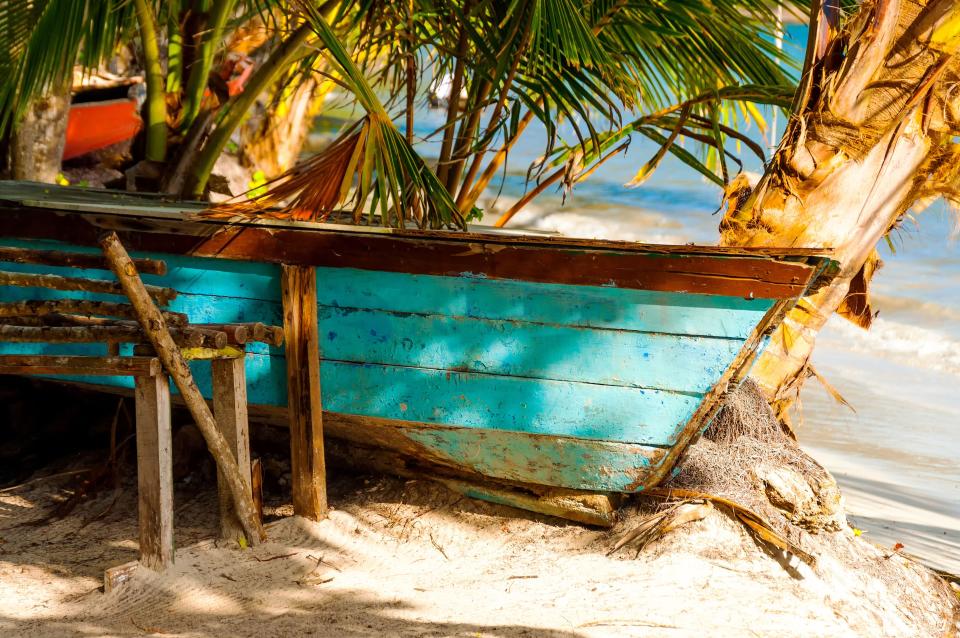
Day 11
Do a circuit of the island with the hotel’s guide, who’ll talk you through Providencia’s history and take you to neighbouring Santa Catalina, mangroves, lagoons and small cayes –part of the Seaflower Biosphere Reserve – where you can dive to seeturtles. You’ll have a picnic en route.
Day 12
Fly home via Bogotá.
When to go
Salvador is sub-tropical, Brasilia always balmy and Rio warm enough year round to swim and surf; winter is actually drier than summer, and the mean temperature only five degrees cooler. In the Pantanal, the dry season (May to November) is best for birding but June to August is when you can get access to the flooded channels by canoe.
How to book
It is possible to book everything independently, but you may find it easier to enlist the help of a specialist tour operator. Telegraph Travel recommends Journey Latin America, Audley and Cox & Kings.

